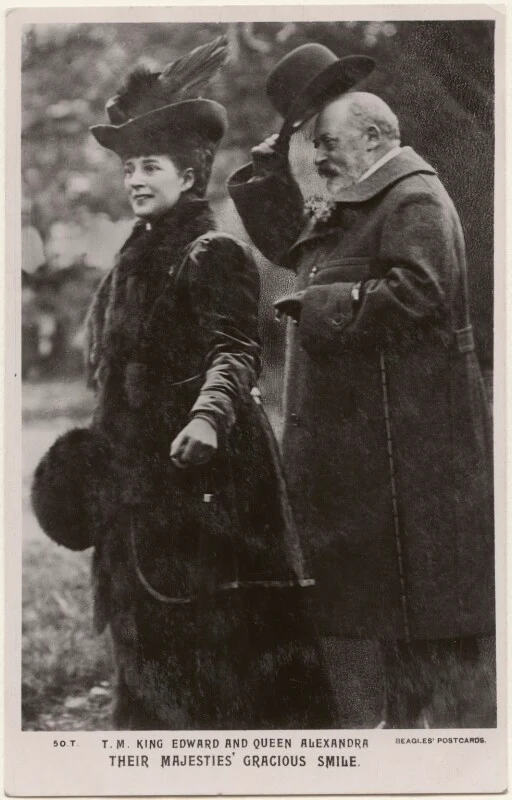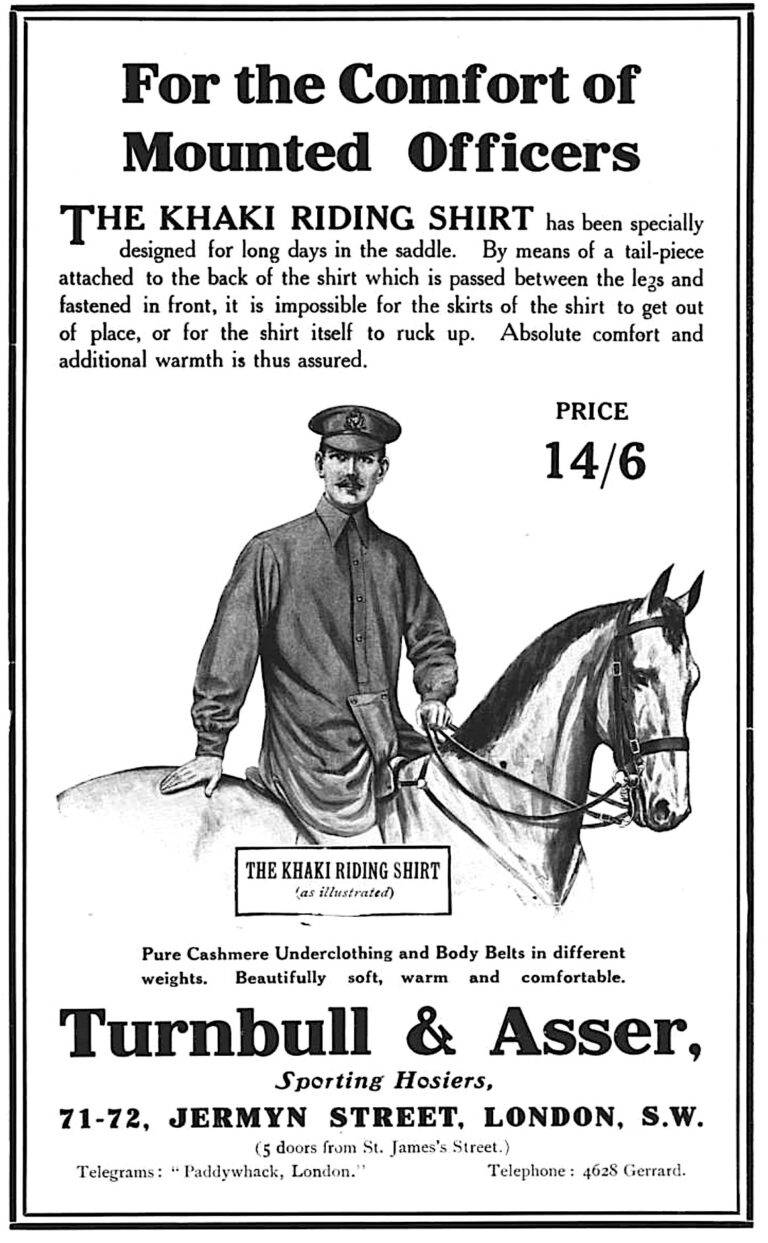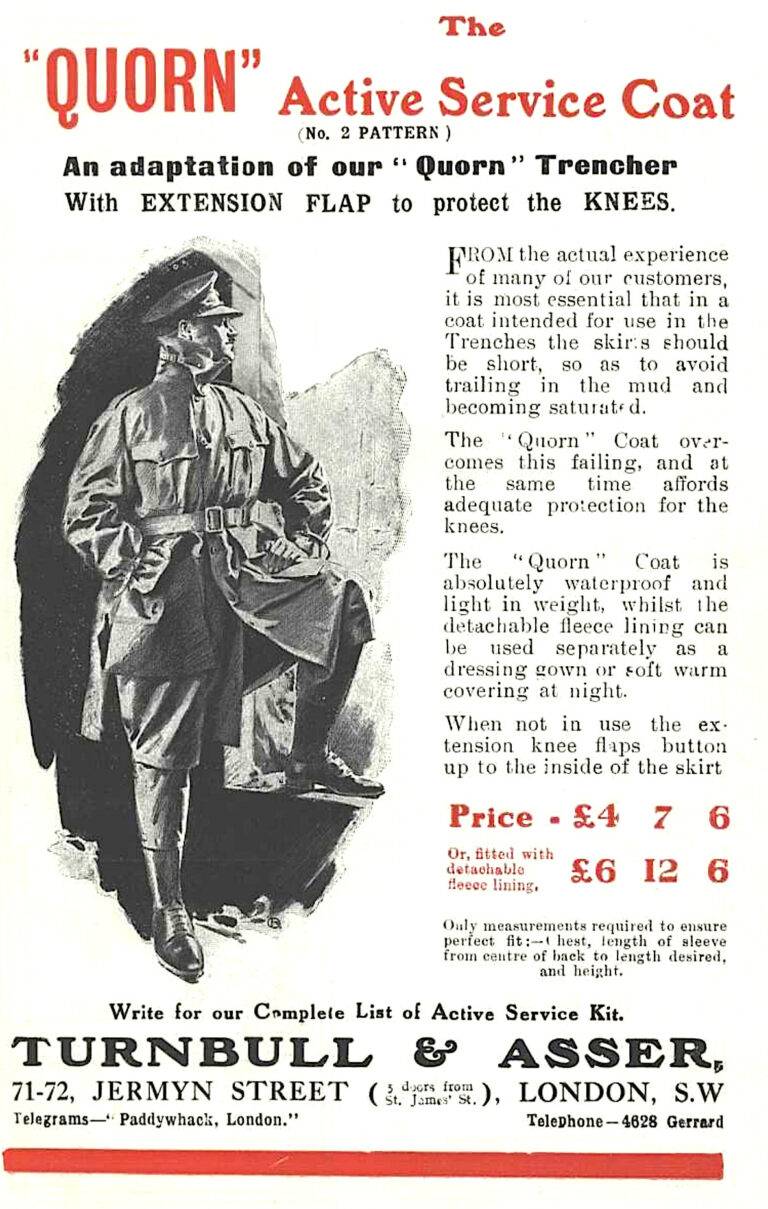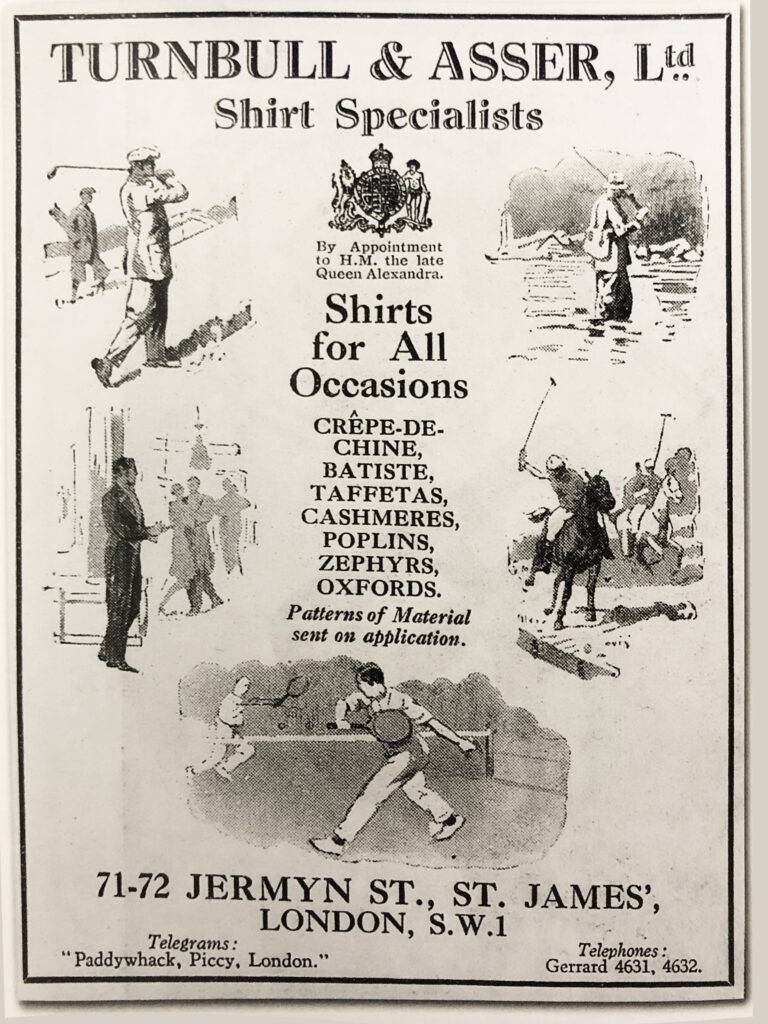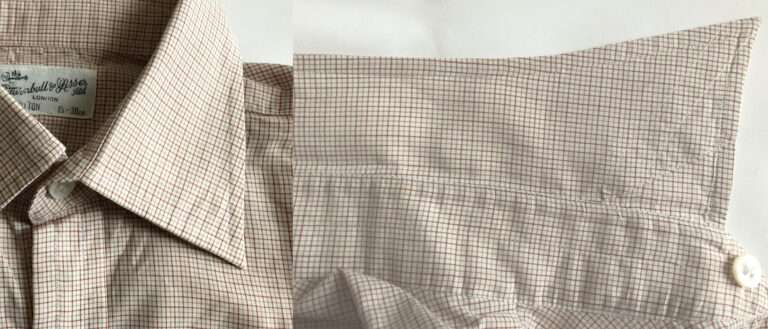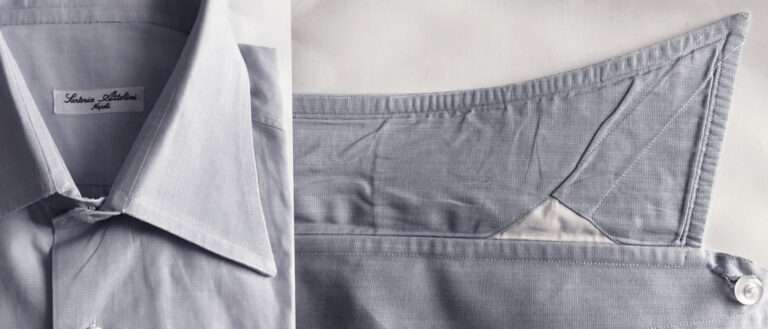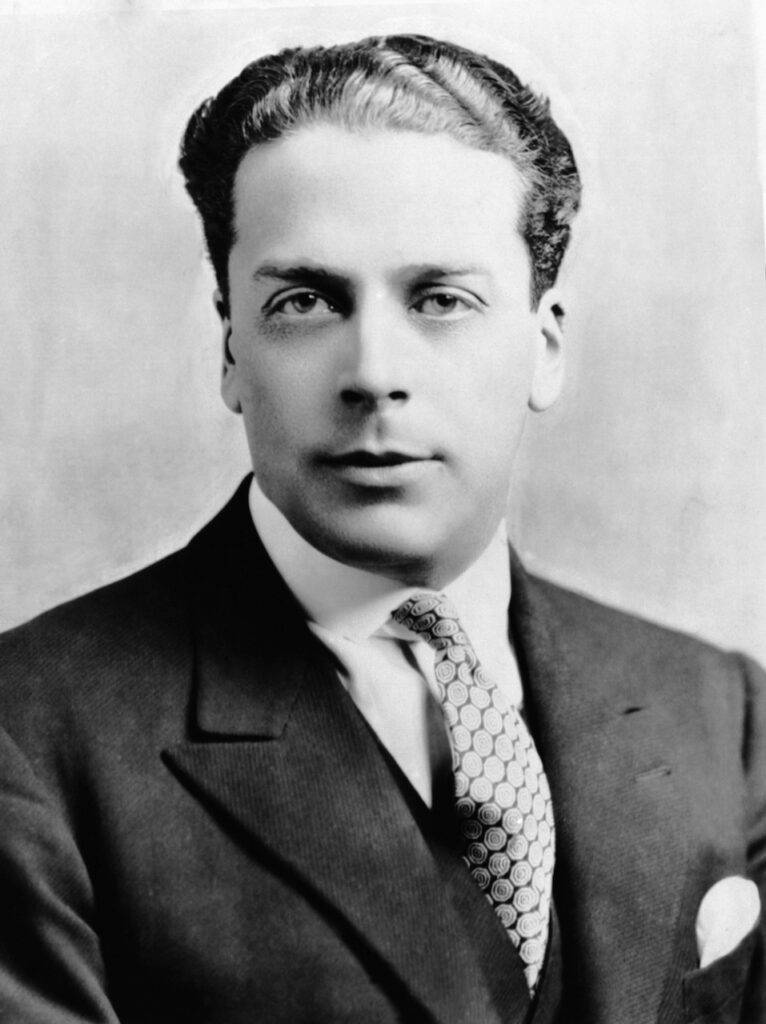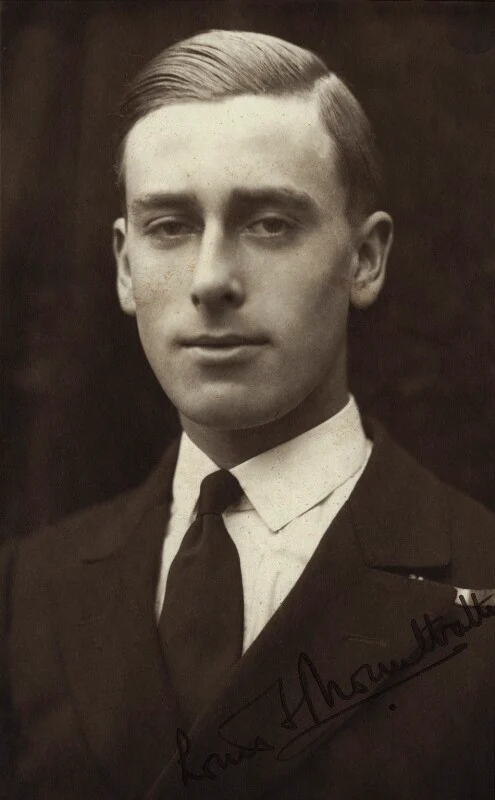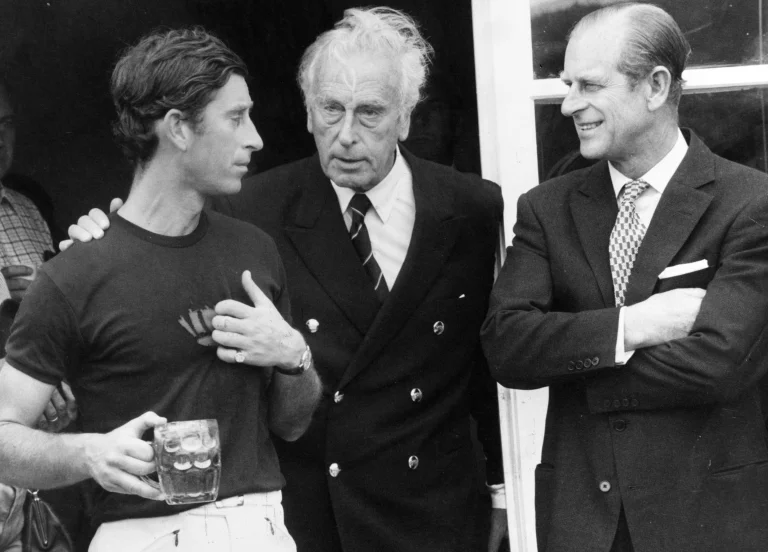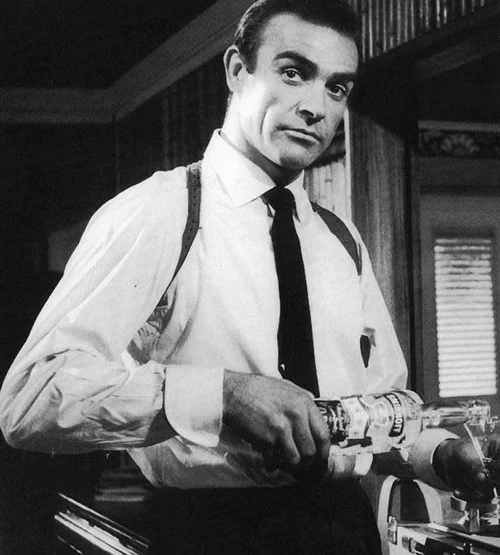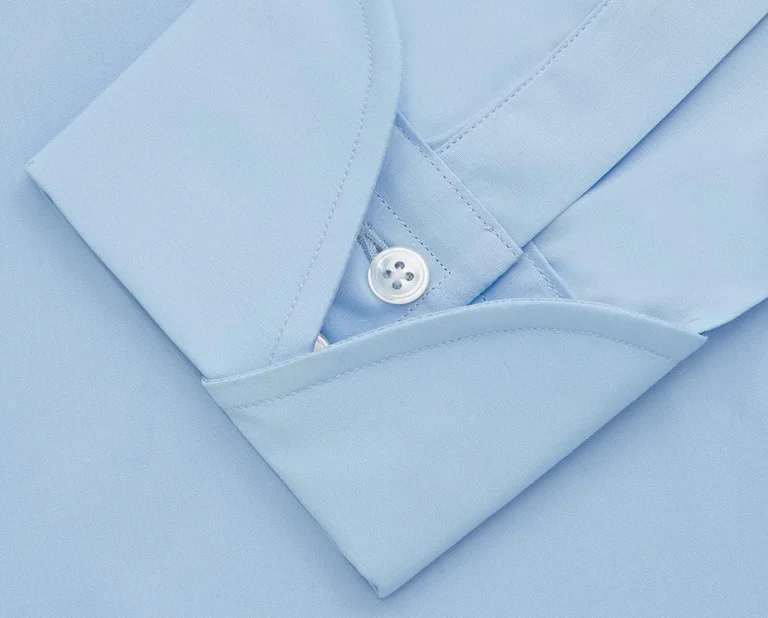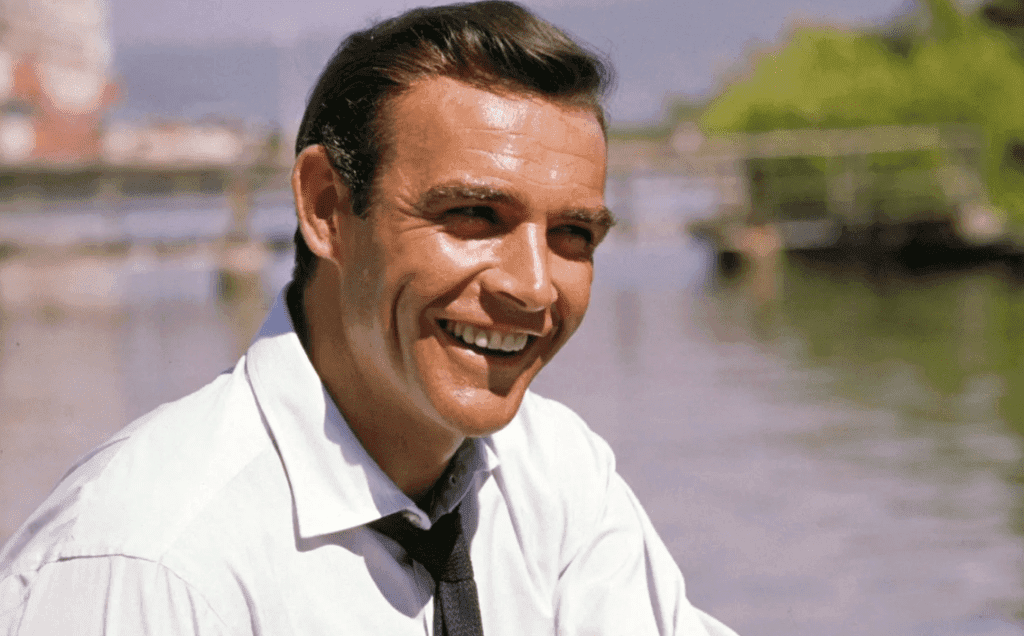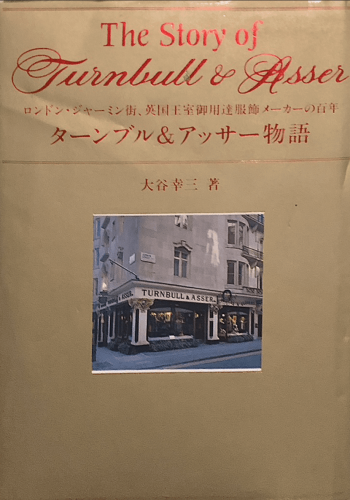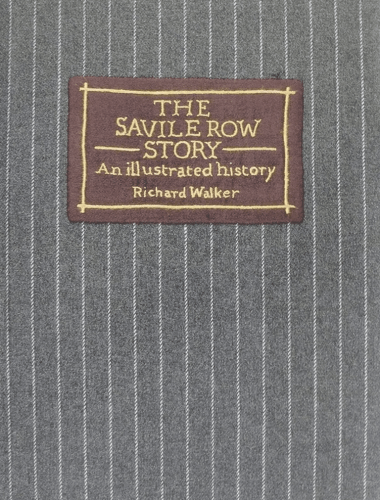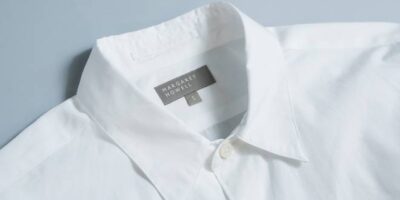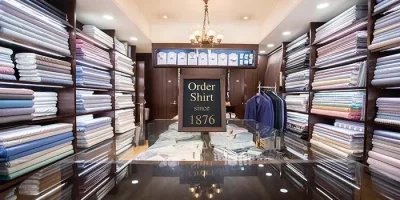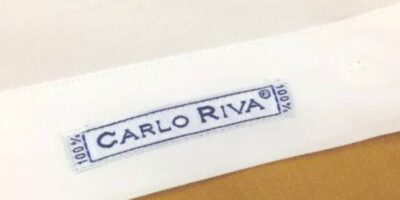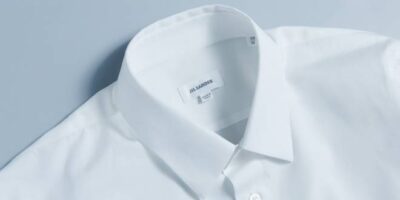When I was young, I used to dream a lot about British culture. However, during my first visit to London, I noticed that the long-standing “British Disease” – a term used in the 1970s to describe economic and industrial decline – seemed to have eroded traditional culture. Nevertheless, as I learned more about the country, I realized that I had only scratched the surface. I now believe that traditions are not easily broken.
Turnbull & Asser Established 1895
© Turnbull & Asser 125 years book
Queen Alexandra’s horse riding coat was made by Turnbull & Asser in 1904. The coat was specifically designed for her to wear during her horseback riding outings, and it featured a tailored fit and a high collar to protect her from the elements. The coat was made from a durable and waterproof fabric, which was essential for outdoor activities. Queen Alexandra was known for her love of horse riding and was often photographed wearing this particular coat. The coat is now part of the Royal Collection Trust and can be viewed at the Fashion Museum in Bath, England.This led to Turnbull & Asser developing a relationship with the royal family.
1915 THE KHAKI RIDING SHIRT AD by Turnbull & Asser
1917 QUORN ACTIVE SERVICE COAT AD by Turnbull & Asser
British Recruits Joining Up (1914-1918)
© Turnbull & Asser 125 years book
In the 1970s and 1980s, Turnbull & Asser began reviving some of the more traditional aspects of its business. The company found that Americans increasingly were buying its wares so it began offering trunk shows at the Grand Hyatt in New York City. Beginning in 1974, Turnbull & Asser sold ready-to-wear shirts in the United States through department stores Bonwit Teller and Neiman Marcus. For a brief period beginning in 1979, Turnbull & Asser even operated a small store in Toronto.
They have deep ties with the British royal family, starting with King Edward VII, who was famous as a dandy. Even today, the company is highly trusted, having received a Royal Warrant from Prince Charles(King Charles III), and Prince William wore the brand in his engagement photo.
Charles III has bought shirts from Turnbull & Asser since his youth. When, in 1980, the then Prince of Wales was granted the power of bestowing royal warrants, his first issue was granted to Turnbull & Asser.
So what is that collar shape that the Japanese call “TURNBULL CUT” means?
I think it means the “Turnbull & Asser collar”, a way of cutting the collar.
Collar designed with a wide collar angle of almost 120° when buttoned closed. The expression when the tie is closed is reminiscent of an English gentleman. The outside of the collar is cut in the shape of an ”S-Line” and the tip of the collar is designed to tuck inwards. This shape prevents the shirt collar from popping outwards when the jacket is worn over it, giving the impression that it is always tight.
The red part of this collar shape is used as an extreme picture.
Before I proceed, I must mention something unfortunate. It appears that only the Japanese refer to it as the ‘Turnbull Cut.’ It seems that Japanese writers have taken the liberty of giving it a name of their own, as is often the case. I have checked my vintage collections, and it turns out that Turnbull & Asser did not create the ‘Turnbull Cut’ in the 1960s. Instead, it is believed that this particular collar shape was developed more recently, with the ‘Classico Italia’ trend in the 1990s having a particularly strong influence on it. It’s possible that Italy was also influenced by the UK in reverse. However, it’s certain that the two countries were in close proximity during this period. It’s worth noting that the same collar shape can be found on wool blend shirts supplied to the British Army in the 1950s to 1960s, indicating that it’s not an exclusive T&A design.
According to their explanation, ‘The collar has a gentle S-shaped line from the collar to the tip of the sword, preventing the collar from protruding from the lapel area of the jacket. The collar is designed to maintain its beautiful shape even when no tie is worn. It has a strong and thick core, which helps keep the collar looking crisp and gives a beautiful silhouette around the neck.’ Turnbull & Asser claims that this collar type was designed by them in the 1930s when they started making readymade shirts and has remained the basis of their range ever since. Although many Japanese fashion magazines describe it as such, it’s difficult to determine whether T&A is the original source, as fashion trends change over time.T&A’s 1920s WW1 advertising illustrations do feature a curved collar shape. However, it is also clear that other companies, like famous Arrow Shirt in usa , sold similar collar styles in usa 1910-20s.
sartoria attolini made by Anna Matuozzo
© Case study data on productivity and factory performance/MEN’S WORK SHIRTS 1951
Jack Buchanan was a Scottish actor, comedian, and singer who rose to fame in the early 1900s as a music hall performer. Born in Helensburgh, Scotland, in 1890, Buchanan was the son of an auctioneer and was educated at the Glasgow Academy.
After trying his hand at his father’s profession and failing as an actor in Glasgow, Buchanan moved to London and began performing as a music hall comedian under the name Chump Buchanan. He eventually changed his stage name to Jack Buchanan and made his West End debut in 1912 in the comic opera The Grass Widow. Despite experiencing some hardship early on in his career, Buchanan achieved fame while on tour in 1915 in Tonight’s the Night and went on to produce and act in his own plays in both London and New York City.
Buchanan’s health was not robust, and he was deemed unfit for military service during the First World War. He continued to perform in West End shows during the war and achieved front-rank stardom in André Charlot’s 1921 revue A to Z, appearing alongside Gertrude Lawrence. One of his signature songs, Ivor Novello’s “And Her Mother Came Too,” was featured in the show. The revue transferred successfully to Broadway in 1924.
Throughout the 1920s and 1930s, Buchanan was known for his grace, charm, and talent as a singer, dancer, and comedian. He starred in numerous musicals and was praised for his elegant gestures, friendly drawling voice, and general air of having a good time. During the Second World War, Buchanan starred in his own musical production It’s Time to Dance, which was based on a book by Douglas Furber and L. Arthur Rose and staged at the Lyric Theatre on Shaftesbury Avenue in London.
Jack Buchanan had a successful career in both stage and film. He made his film debut in 1917 during the silent cinema era and went on to appear in around thirty-six films throughout his career. In 1938, he achieved a unique accomplishment by starring in the London stage musical This’ll Make You Whistle while simultaneously filming a movie version. The two productions competed with each other, and the film was released while the stage version was still running. Some of his other notable film roles included Monte Carlo (1930), Smash and Grab (1937), and The Gang’s All Here (1939).
In addition to acting, Buchanan also produced several films, including Happidrome (1943) and The Sky’s the Limit (1938), which he also directed. He continued to work on both Broadway and the West End and appeared in several Hollywood musicals. His most famous film role was in The Band Wagon (1953), in which he played the camp theatre director Jeffrey Cordova opposite Fred Astaire and Cyd Charisse. Despite suffering from spinal arthritis, Buchanan performed several dance numbers in The Band Wagon with Astaire.
In addition to acting, Buchanan also produced several films, including Happidrome (1943) and The Sky’s the Limit (1938), which he also directed. He continued to work on both Broadway and the West End and appeared in several Hollywood musicals. His most famous film role was in The Band Wagon (1953), in which he played the camp theatre director Jeffrey Cordova opposite Fred Astaire and Cyd Charisse. Despite suffering from spinal arthritis, Buchanan performed several dance numbers in The Band Wagon with Astaire.
Buchanan’s American stage appearances included: André Charlot’s Revues, Charles B. Cochran’s Wake Up and Dream, Pardon My English, Between the Devil and Harvey (1948).
Film & Radio , television
Buchanan’s Hollywood films included Paris, The Show of Shows (1929), Monte Carlo (1930) and The Band Wagon (1953). His British films included Yes, Mr Brown (1933), Goodnight, Vienna (1932), That’s a Good Girl (1933), Brewster’s Millions (1935), Come Out of the Pantry (1935), When Knights Were Bold (1936), This’ll Make You Whistle (1936), Smash and Grab (1937), The Sky’s the Limit (1938), Break the News (1938), The Gang’s All Here (1939), The Middle Watch (1940), Bulldog Sees It Through (1940), As Long as They’re Happy (1955) and Josephine and Men (1955). He made one French film (bilingual), The Diary of Major Thompson (1955).
Buchanan was a frequent broadcaster on British radio, especially during the Second World War. Programmes included The Jack Buchanan Show and, in 1955, the hugely popular eight-part series Man About Town. On 12 June 1928, Buchanan participated in the first-ever transatlantic television broadcast. It was conducted by Scottish engineer John Logie Baird, an important figure in the technological development of television. At the time, the few television sets that existed had been custom-built by engineers and were not available for purchase by the general public in the United Kingdom or the United States.American television shows on which Buchanan appeared during the era of stores selling television sets included Max Liebman’s Spotlight in 1954 and The Ed Sullivan Show.
In a British tradition of actor-management, Buchanan frequently produced his own shows, many of which were premiered in the Alhambra Theatre, Glasgow. He was also heavily involved in the more commercial side of British show business. He was responsible, with partners, for the building and ownership of the Leicester Square Theatre, London, and the Imperial in Brighton. He also controlled the Garrick Theatre in the West End of London and the King’s Theatre in Hammersmith. Jack Buchanan Productions (in which his partners were J. Arthur Rank and Charles Woolf) owned Riverside Studios in Hammersmith. He had been at school with the pioneer of television John Logie Baird and with him co-owned Television Limited, which manufactured and rented televisions. Not all his business ventures were profitable, and at his death his estate was valued for probate (in 1958) at £24,489 (equivalent to £609,000 today).
It is important to note that if stage costume designers had not ordered colorful costumes from Turnbull & Asser, shirts would never have been produced in anything other than white or cream. It is possible that the “Peacock Revolution” of the 1960s would not have existed as well.
Sir Winston Leonard Spencer Churchill (English: Sir Winston Leonard Spencer Churchill, 30 Nov 1874 – 24 Jan 1965). He was an undisputed leading British politician, army soldier and author.
Winston Churchill 1953 © Philippe Halsman © National Portrait Gallery
Churchill wears his siren suit in meeting with General Montgomery
Winston Churchill had a fondness for uniforms, but when it came to his personal style, he favored practicality and zippers. His favorite suit was not a uniform, but a “siren suit” he designed himself, which his children called his “rompers.” Although it was designed for quick dressing during air raids, Churchill actually created it before World War II, inspired by the boiler suits worn by his fellow bricklayers at Chartwell.
Churchill’s siren suit was generously cut with breast and side pockets, pleated trouser fronts, and fold-over cuffs, emphasizing its simplicity and comfort. Turnbull & Asser, bespoke tailors, made several versions of it for him in various fabrics for different occasions. For dressier events, he had suits in red, green, and blue velvet, a business-like blue serge for formal occasions, and one made of smock material for painting. It’s intriguing to see how Churchill used his fashion choices to express himself and adapt to different situations.
In terms of fashion, Lord Mountbatten was known for his impeccable style and his love for tailored suits. He was often seen wearing suits that were well-tailored and made from high-quality materials. Lord Mountbatten was also known for his love of military attire, and he often wore military-style jackets and coats. Lord Mountbatten was also known for his signature style, which included a white silk scarf and a pair of white gloves. This became known as the “Mountbatten look,” and it was a style that was emulated by many men in the 1950s and 1960s.
Lord Mountbatten was Charles 3’s great-uncle, and he played a significant role in Charles’ life and fashion. Lord Mountbatten was a mentor and advisor to Charles, and he helped guide him through various stages of his life, including his military career and his transition into royal duties.
Doctor Zhivago(1965) & The Great Gatsby(1974)
Both Doctor Zhivago (1965) and The Great Gatsby (1974) had costume design involvement from Turnbull & Asser, a British shirtmaker known for their high-quality bespoke shirts. For Doctor Zhivago, Turnbull & Asser provided a selection of shirts and accessories. Meanwhile, for The Great Gatsby, Turnbull & Asser supplied shirts for the male cast, including the lead actor Robert Redford who played Jay Gatsby.
“Doctor Zhivago” is a sweeping epic romance film released in 1965, directed by David Lean and based on the novel of the same name by Boris Pasternak. The story is set in Russia during World War I and the Russian Revolution and Civil War that followed. The film follows the life of Yuri Zhivago, a physician and poet, whose life is forever changed by the revolution and its aftermath.The film features an all-star cast, including Omar Sharif as Yuri Zhivago and Julie Christie as Lara Antipova, his love interest. At the 38th Academy Awards, “Doctor Zhivago” won five Oscars, including Best Adapted Screenplay, Best Original Score, Best Cinematography, Best Art Direction, and Best Costume Design. It was also nominated for five additional awards, including Best Picture and Best Director. Additionally, the film won five Golden Globe Awards at the 23rd Golden Globe Awards, including Best Motion Picture – Drama and Best Actor – Motion Picture Drama for Omar Sharif.
“Doctor Zhivago” has also been a commercial success, ranking as the eighth highest-grossing film of all time in the US and Canada. It is also one of the top ten highest-grossing films worldwide. Its enduring popularity is reflected in its inclusion on several prestigious rankings. In 1998, it was ranked 39th on the American Film Institute’s list of 100 Years… 100 Movies, and the following year it was ranked as the 27th greatest British film of all time by the British Film Institute.
“The Great Gatsby” is a romantic drama film released in 1974, based on the classic 1925 novel of the same name by F. Scott Fitzgerald. The film was directed by Jack Clayton, produced by David Merrick, and written by Francis Ford Coppola. It stars Robert Redford in the lead role of Jay Gatsby, with Mia Farrow, Sam Waterston, Bruce Dern, and Karen Black in supporting roles.
While the film received a mixed reception from critics upon its release, it was a commercial success, grossing over $26 million against a budget of $7 million. The film tells the story of Jay Gatsby, a mysterious millionaire who becomes infatuated with Daisy Buchanan, a married woman from his past. Their rekindled romance leads to tragic consequences as Gatsby’s hidden past is revealed. Despite the mixed reception, “The Great Gatsby” has remained a beloved and iconic film over the years, particularly for its stunning visuals, costumes, and score. It has been adapted for film several times, with the most recent version being released in 2013 starring Leonardo DiCaprio as Jay Gatsby.
Turnbull & Asser holds a royal warrant, bestowed in 1980 by Prince Charles. (Now the King charles III)
The King of Charles III has been a long-standing customer of Turnbull & Asser, a British bespoke shirtmaker that has been in operation since 1885. The company is renowned for producing high-quality shirts, suits, and accessories for men, using the finest materials and traditional methods of craftsmanship.Over the years, Prince Charles has been photographed wearing Turnbull & Asser shirts on numerous occasions, and he is known for his appreciation of their attention to detail and quality. In recognition of his patronage, Turnbull & Asser has been granted a Royal Warrant, which means that the company is officially authorized to supply goods to the Royal Family.
In addition to being a customer, King of Charles III has also visited Turnbull & Asser’s factory on several occasions. During these visits, he has met with the company’s skilled artisans and learned more about the production process for bespoke shirts.the relationship between King of Charles III and Turnbull & Asser is one built on a shared appreciation for traditional craftsmanship and attention to detail. The Prince’s patronage has helped to reinforce the company’s reputation as a leading maker of bespoke clothing, and his visits to the factory have provided an opportunity to highlight the importance of supporting British manufacturing and traditional skills.
So, What do you think that ?



